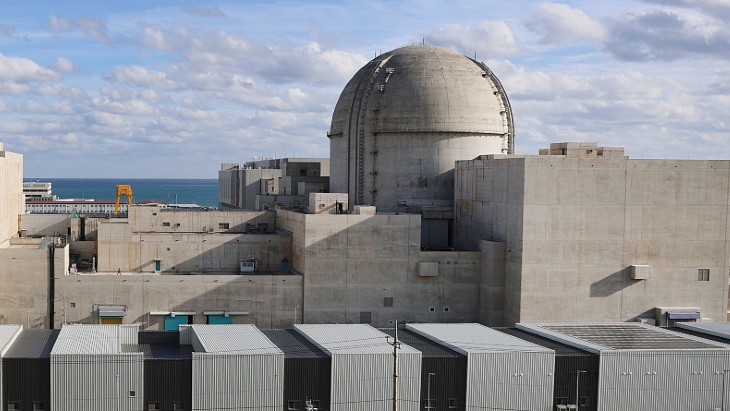The UK's Office for Nuclear Regulation (ONR) said it is satisfied that EDF Energy is taking "appropriate and conservative action in the interests of continued nuclear safety" in its decision to shut down its reactors at the Heysham 1 and Hartlepool sites in response to the identification of unexpected "cracking" in a boiler spine of unit 1 at Heysham 1.
EDF Energy informed ONR when it detected a fault with the boiler unit of reactor I at Heysham 1 in November, company spokesman Gordon Bell told World Nuclear News. ONR gave permission for the utility to isolate the boiler unit and operate the reactor as normal until it was able to take it offline and inspect it fully, which it did in June, Bell said.
Each reactor at Heysham 1 and Hartlepool has eight boiler units, which are arranged around their associated reactor in four quadrants with each quadrant containing two boiler units.
"ONR was satisfied we could run the reactor with that boiler isolated," Bell said. "By June, we had worked out a strategy for investigating the defect and we then put out a press release to local media and newswires stating that we were going in to the reactor to refuel and to take the opportunity to carry out boiler investigations," he said.
EDF Energy is unable to give an exact description of the defect yet, but it is certain that it is on the boiler spine, which supports the weight of the boiler tubes, Bell said. "ONR has described the defect as a crack, but we are referring to it as a defect until we complete our investigations," he said.
Asked why the company thinks the defect may affect some reactors and not others, Bell said: "Heysham 1 and Hartlepool are of same design, advanced gas-cooled reactors, and the design of those is unique," he said. "We are confident that this defect couldn’t be applied to our other reactors, which are all advanced gas-cooled reactors, because they were built at different times," he said.
In EDF Energy's fleet, only Heysham 1 and Hartlepool are of the exact same design and built in the same year – 1983.
It is too early to say whether the defect with the boiler spine is related to the design, manufacture or operations process, Bell said.
"That's what the investigation is looking into. It has got to be one of the three," he said.
It is also too early to know whether the defect is repairable, he said, but the company believes it can "come up with a repair strategy and will need to see if that can be applied anywhere else," Bell said. "We have found it in only one boiler so far," he said.
Asked if the defect may affect the lifetime operation of reactor 1 at Heysham 1, Bell said that, "We have a lifetime extension strategy across the business where and as long as it remains safe to do so, and that remains our position."
Once the company completes shutting down the four reactors, output will have been reduced to 1155 MW at Heysham 1 and 1180 MW at Hartlepool, he said.
EDF Energy will not be providing a further update on the investigation until it has been competed in the next eight weeks, he said.
Researched and written
by World Nuclear News




_72306.jpg)


_49562.jpg)





